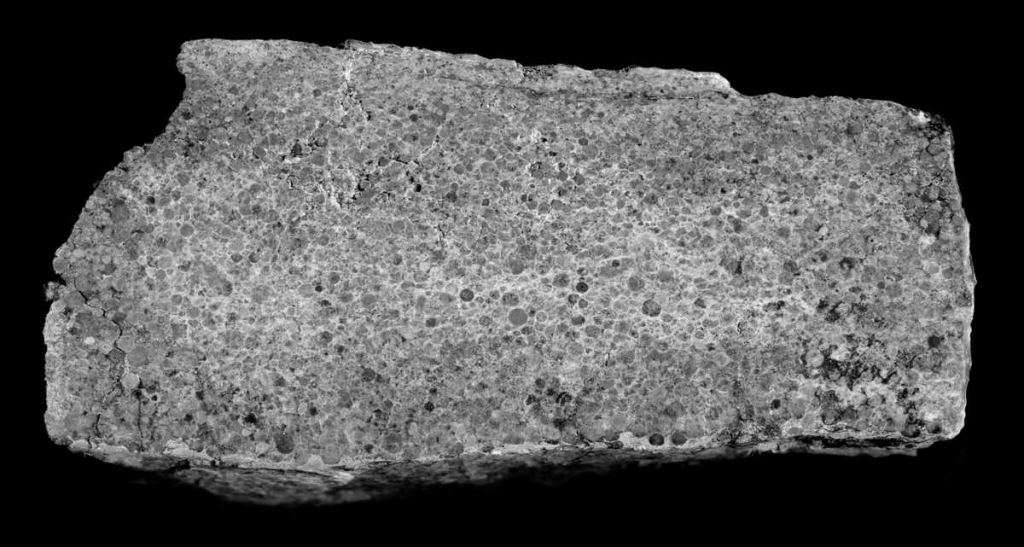It’s no secret that Earth was bombarded with plenty of meteors for billions of years during the solar system’s early formation. Estimates vary on how much material impacted the planet, but it had a considerable effect on the planet’s atmosphere and the evolution of life. Now, a new study from a team led by researchers at the Southwest Research Institute puts the number at almost ten times the number of previously estimated impacts. That much of a difference could dramatically change how geologists and planetary scientists view the early Earth.
Early on, the solar system was much more populated with space rocks. Those space rocks were known to hit Earth, and speculation abounds about what happened when they did so. Earth eventually partially cleaned out its orbital path, culminating in the period called the Late Heavy Bombardment.
Not as many rocks hit the Earth in its later years, but the ones that did had a huge impact.While the destructive power of that time period has been well documented, large asteroids continued to impact the Earth consistently for billions of years. When they did so, they formed “impact spherules” of molten rock that were thrown into the air, solidified, and then landed back on the Earth’s surface. They became distinct sand-grain-sized spherical components of the geological layers laid down when their impact happened.
There are multiple spherule layers in the geologic record, showing that impacts large enough to create sky-bound ejecta were common. More have been found recently, leading researchers to examine whether the newfound abundance of these spherule layers was accounted for in simulations of early asteroid bombardment.
What was the Late Heavy Bombardment that pummelled Earth for millions of years?Credit – History of the Earth YouTube Channel
It turns out they weren’t – current bombardment models resulted in about ten times fewer spherule layers that have been found in the geological record. Consequently, that implies up to ten times more major asteroid impacts in that time period than models had predicted.
That many more impacts could have had a significant effect on one of the most important environmental factors of the early Earth – its oxygen level. After discovering the discrepancy between the model predictions and the geological data, researchers moved on to modeling what influence these impacts would have on the planet’s environmental chemistry.
 Cross-section of a spherule layer created by a major asteroid impact.
Cross-section of a spherule layer created by a major asteroid impact.
Credit – SwRI
Unsurprisingly, it had a pretty major impact. Large impacts, such as those creating spherule layers, can create reactive gases that react with oxygen to pull it out of the atmosphere. According to the geological record, for much of Earth’s early history, it had extraordinarily low oxygen levels. It turns out that multiple large impactors might have maintained low levels for billions of years.
Those billions of years eventually ended with what is now known as the Great Oxidation Event, where atmospheric oxygen levels spiked dramatically. At that point, Earth had cleared out most of the larger asteroids in its vicinity, so the additional oxygen released into the atmosphere by its burgeoning biosphere wasn’t wiped out by the reactive gases from asteroid impacts.
That event was one of the significant dramatic shifts in the history of life on Earth. Understanding it now, from so far in the future, is difficult. But it is helpful to know that it was partially enabled by Earth clearing out its orbital path and subjecting itself to significant punishment for billions of years. Just another example of how so many things had to go right for intelligent life to evolve.
Learn More:
SwRI – SwRI-LED TEAM PRODUCES A NEW EARTH BOMBARDMENT MODEL
JPost – Ancient asteroids struck Earth frequently, delayed rise of life – study
UT – Leftover Material Caused the Late Heavy Bombardment
UT – Evidence of a Late Heavy Bombardment Occuring in Another Solar System
Lead Image:
Artist’s depiction of asteroids impacting the early Earth.
Credit – SwRI

